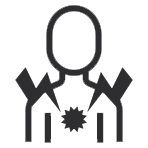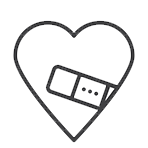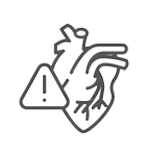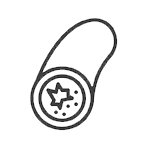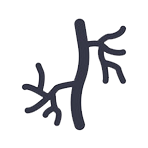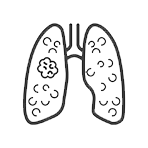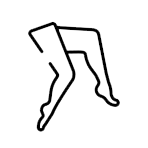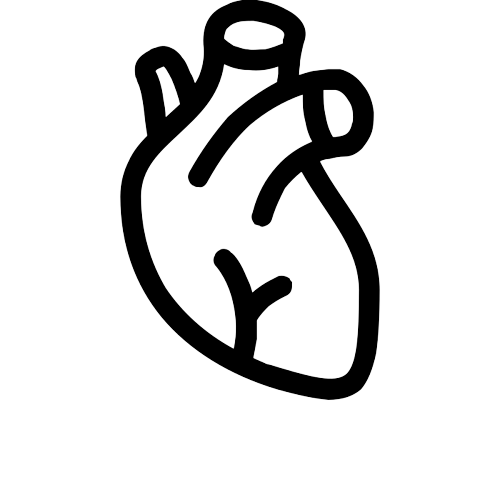Heart attacks
Q & A
When part of the heart muscle doesn’t get enough blood and oxygen, this is called a heart attack. The heart starts to die in this area. Another nae for this is myocardial infarction, or MI. Most of the time, a heart attack happens when one or more of the coronary arteries are blocked. Most of the time, this blockage is caused by a blood clot that forms when a piece of plaque build up in the artery breaks. After a heart attack, you might worry about what will happen next. Your heart will start to feel better over the next few weeks. Even though it can be hard to break old habits, you can lower your chances of having another heart attack. You can do this by making changes to the way you live and by taking medicine.
What is angina, and why is unstable angina a cause for concern?
Angina is a symptom of coronary artery disease. Angina is caused by inadequate blood flow to the heart. Angina can be harmful so it is essential to pay attention to the symptoms, understand what is usual for you, learn how to manage it, and know when to seek assistance. Angina is characterized by chest discomfort, pressure, or a heavy sensation in the chest. Some individuals experience the same symptoms in the back, neck, jaw, or upper abdomen, as well as in one or both shoulders or arms.
Two forms of angina exist:
- Stable angina is characterized by the predictability of when symptoms will occur. You likely know what triggers your angina attacks. For example, you are aware of the amount of physical activity that produces angina. You are also aware of how to alleviate your discomfort with relaxation and medication such as nitroglycerin.
- Unstable angina is characterized by deviation from the regular pattern of stable angina symptoms. The symptoms do not occur with known triggers. For instance, you may get angina when resting when previously symptoms do not occur at rest. Unstable angina is an emergency. It might indicate that you are experiencing a heart attack.
Why does a heart attack occur?
The gradual development plaque in the coronary arteries is referred to as coronary artery disease, or CAD. In many people, the formation of plaque begins in childhood and continues throughout life. Plaque deposits may restrict the flow of blood to the heart, resulting in angina.
Heart attacks occur when the blood supply to the heart is obstructed. This develops from accumulation of fatty deposits known as plaque within the coronary arteries. If a plaque ruptures, the body attempts to repair it by creating a clot. This clot can obstruct the artery and prevent blood and oxygen from reaching the heart.
Heart attacks can be triggered by intensive exercise, unexpected strong emotions, or the use of illicit drugs (such as stimulants like cocaine). However, there is frequently no obvious explanation for why heart attacks occur when they do.
What are the signs and symptoms?
Symptoms of a heart attack are: chest discomfort, chest pressure, or an unusual chest sensation. Sweating, breathlessness, nauseas vomiting, weakness or uneven pulsation. Chest discomfort or pressure is the most prevalent symptom in both men and women. However, women are more prone than males to experience symptoms such as shortness of breath, nausea, and back or jaw discomfort.
Some of the ways heart attack pain is expressed:
- Numerous individuals experience the chest discomfort as soreness, pressure, squeezing, or heaviness.
- People frequently place their hand to their chests while describing agony.
- The discomfort may expand to the left arm and shoulder, as well as the back, jaw, neck, and right arm.
How is a cardiac arrest treated?
If you are transported to the hospital by ambulance, immediate treatment will be initiated to restore blood flow and reduce cardiac damage. During transport, you will be given aspirin and other anticoagulant medications. An ECG will be performed to identify indicators of poor blood circulation, heart muscle damage, irregular heart beat or other cardiac condition. At the hospital, you will quickly have blood tests to check for elevated cardiac markers of injury. Once confirmed, cardiac catheterization is performed to reveals which arteries are clogged and how well your heart is functioning. If the cardiac catheterization reveals that an artery is blocked, the physician may immediately perform angioplasty to restore blood flow.
When the procedure is completed, you will be prescribed medications to prevent future heart attacks. Take all of your medications as prescribed. After a heart attack, the likelihood of having another one is increased. Participation in a cardiac rehabilitation program reduces this risk. Consultation with dietician and physical therapist can teach you how to eat a balanced diet and safely exercise.
What steps should you take if you suspect a heart attack?
Act quickly if you have signs of a heart attack. Time saved is tissue saved. Rapid intervention might save your life.
- Call emergency services immediately. Describe your symptoms and indicate that you may be experiencing a heart attack.
- Remain on the phone and the operator may recommend that you chew Aspirin if available to prevent blood from clotting, thus it may improve your chances of surviving a heart attack.
- Wait for an ambulance to arrival instead of attempting to transport yourself by driving alone.
- The best option is to be transported to the hospital by ambulance. Even before you get at the hospital, the paramedics can provide life-saving care.

